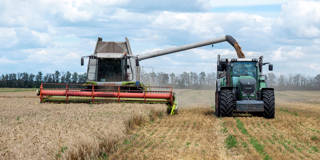It is hard to predict when exactly food prices will spike again, but there is little doubt that more shocks will come. The consequences are likely to be compounded if a few companies still hold inordinate power over the world’s food systems.
WATERLOO/EAST LANSING – The COVID-19 pandemic and the war in Ukraine have caused commodity prices to soar in recent years, severely undermining global food security. Now, global food prices are down from the peaks of a year ago, but no one should be complacent: the world’s food woes are far from over. The risk of additional price volatility remains high.

WATERLOO/EAST LANSING – The COVID-19 pandemic and the war in Ukraine have caused commodity prices to soar in recent years, severely undermining global food security. Now, global food prices are down from the peaks of a year ago, but no one should be complacent: the world’s food woes are far from over. The risk of additional price volatility remains high.